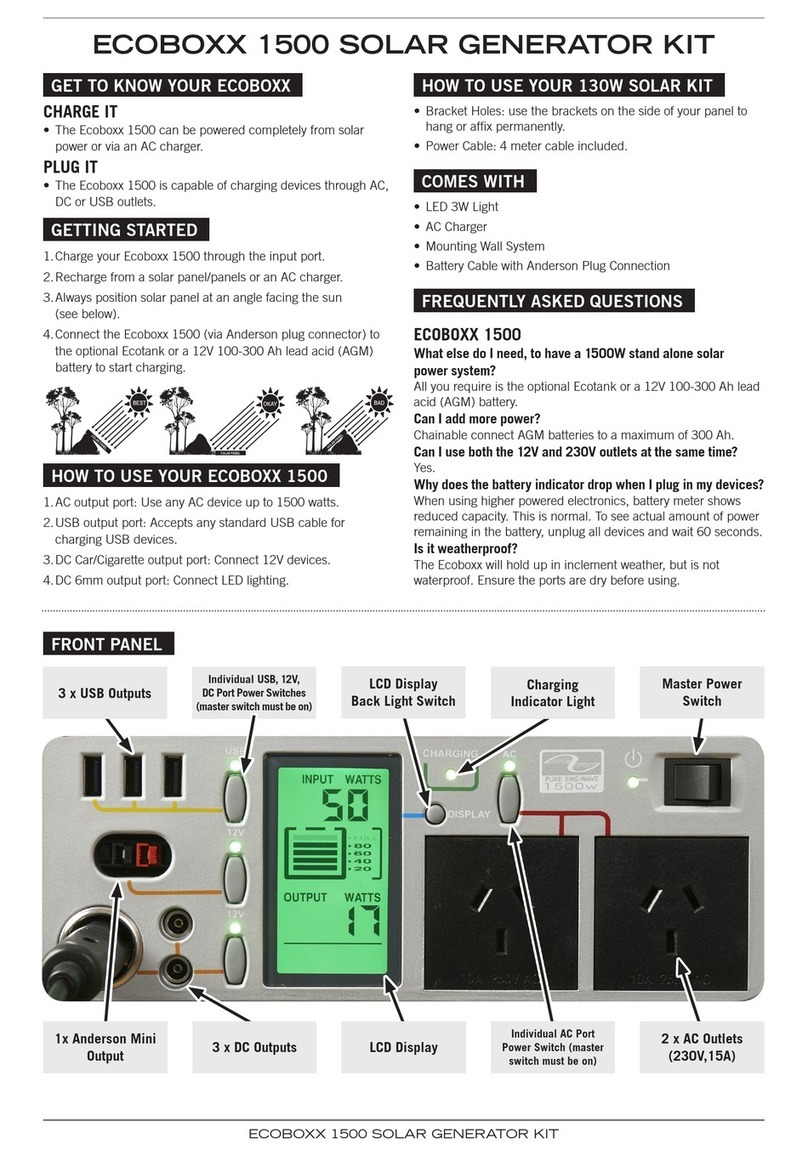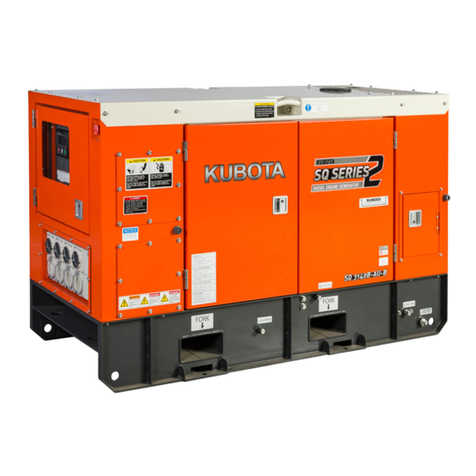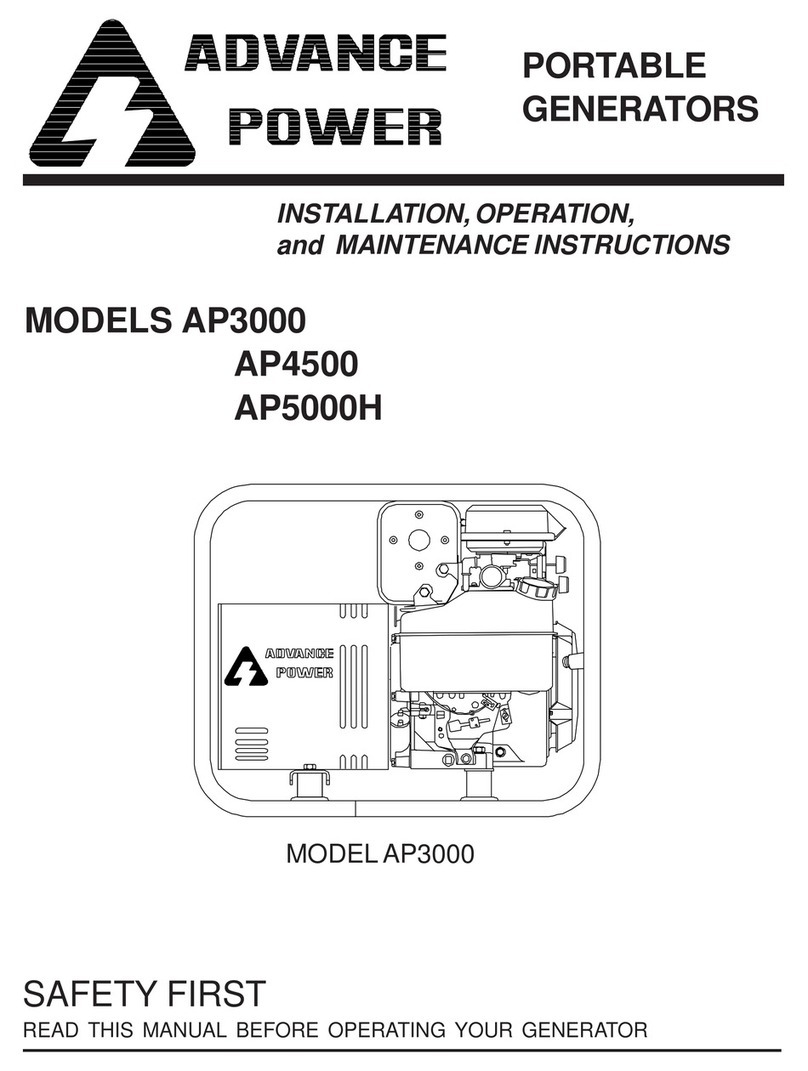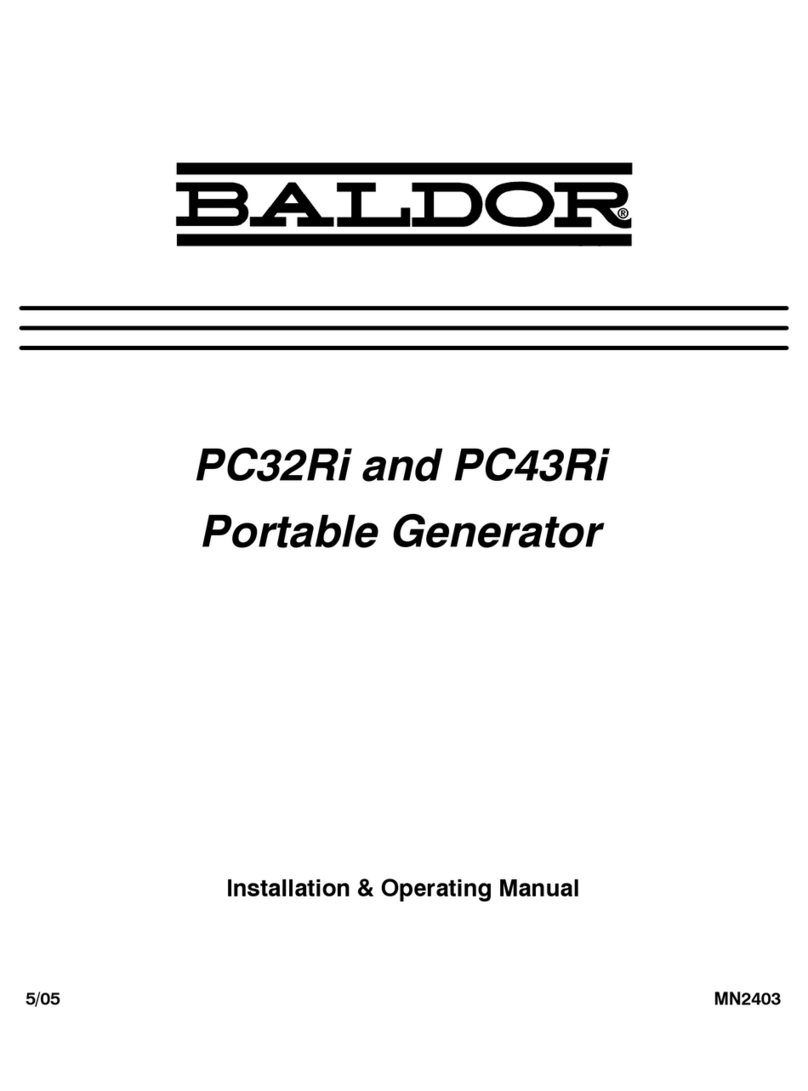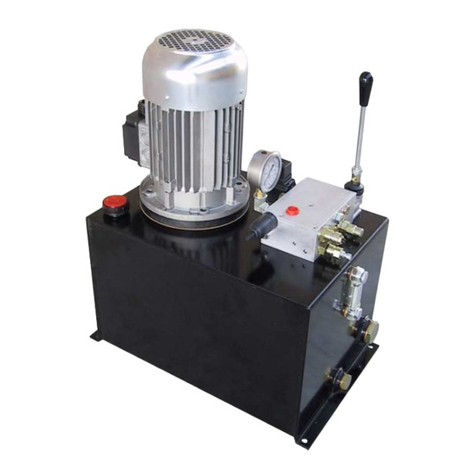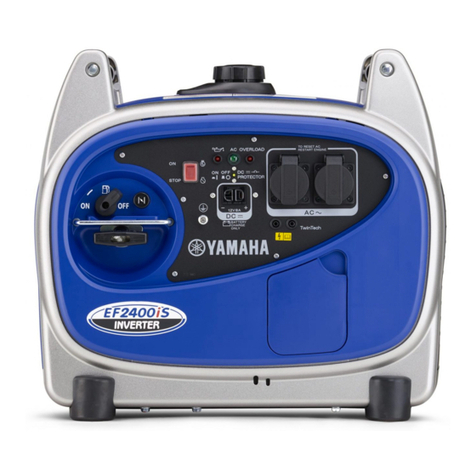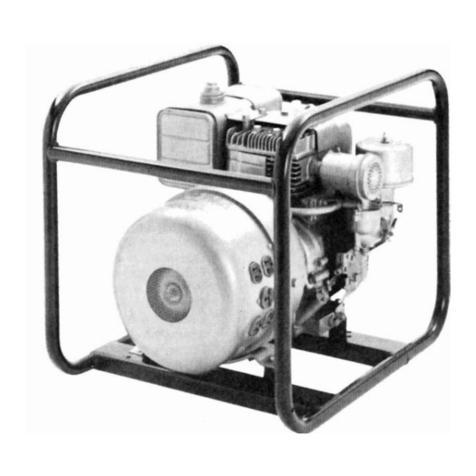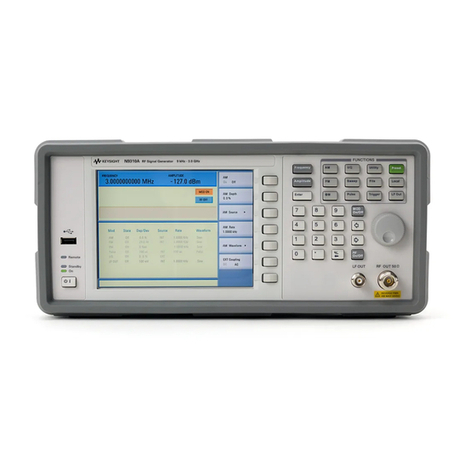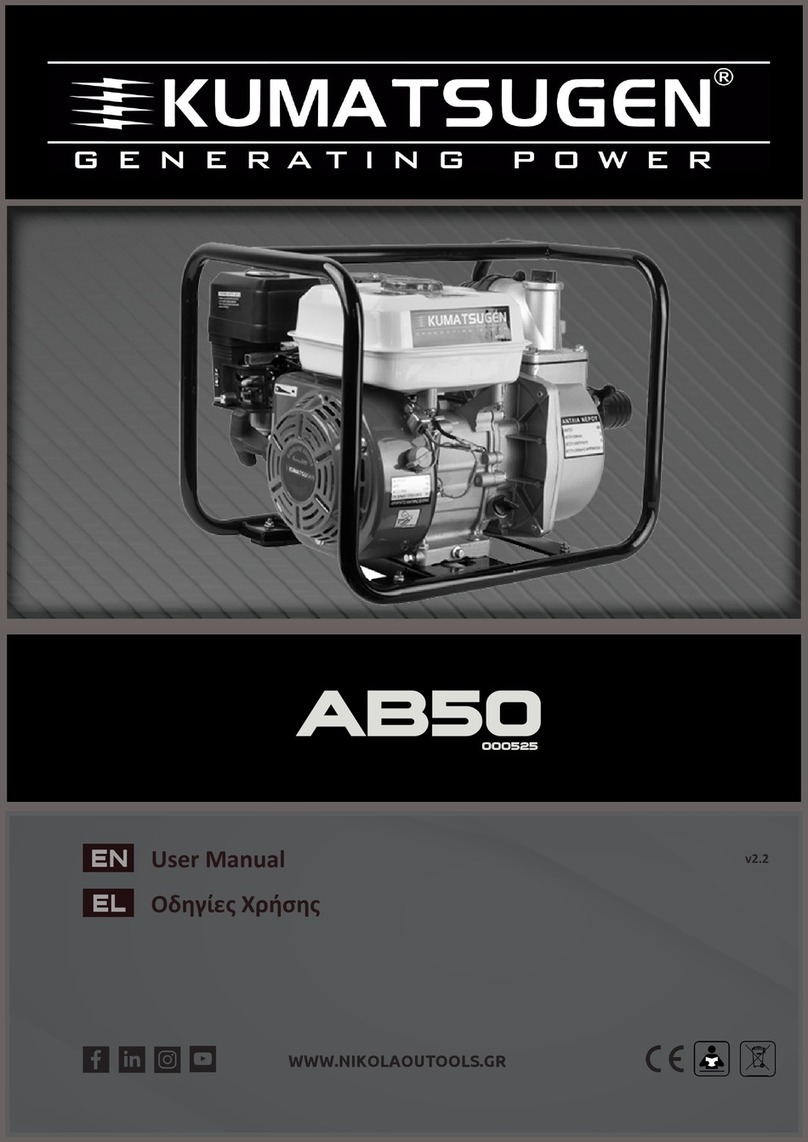General Air Products NGP-1000D-M2 User manual

Nitrogen Generator
NGP-1000D-M2/M3
Installation, Operation
and Maintenance Manual
Call 1-800-345-8207
or visit our web site for our complete product listing
www.GeneralAirProducts.com 216442
REV: 2
(7/18)

2
1-800-345-8207

1-800-345-8207
3
Table of Contents
IMP RTANT: ALL INF RMATI N SUBJECT T CHANGE WITH UT N TICE.
Consult factory for the most up to date version of this manual - 1-800-345-8207.
If there are any questions regarding installation, operation, or maintenance of this compressor, please
call 1-800-345-8207
Safety & Warnings . . . . . . . . . . . . . . . . . . . . . . . . . . . . . . . . . . . . . . . . . . . . . . . . . . . . . . . . . . . . . . . Section 1
System verview . . . . . . . . . . . . . . . . . . . . . . . . . . . . . . . . . . . . . . . . . . . . . . . . . . . . . . . . . . . . . . . . Section 2
Before Going To The Job Site . . . . . . . . . . . . . . . . . . . . . . . . . . . . . . . . . . . . . . . . . . . . . . . . . . . . . Section 3
Uncrating and Inspection . . . . . . . . . . . . . . . . . . . . . . . . . . . . . . . . . . . . . . . . . . . . . . . . . . . . . . . . . Section 4
Installation of Nitrogen Generator . . . . . . . . . . . . . . . . . . . . . . . . . . . . . . . . . . . . . . . . . . . . . . . . . . Section 5
Wiring . . . . . . . . . . . . . . . . . . . . . . . . . . . . . . . . . . . . . . . . . . . . . . . . . . . . . . . . . . . . . . . . . . . . . . . . . Section 6
Standard Air Filling Method . . . . . . . . . . . . . . . . . . . . . . . . . . . . . . . . . . . . . . . . . . . . . . . . . . . . . . . Section 7
Nitrogen Filling Procedure . . . . . . . . . . . . . . . . . . . . . . . . . . . . . . . . . . . . . . . . . . . . . . . . . . . . . . . . Section 8
Nitrogen Control Module . . . . . . . . . . . . . . . . . . . . . . . . . . . . . . . . . . . . . . . . . . . . . . . . . . . . . . . . . Section 9
Alarms/Troubleshooting . . . . . . . . . . . . . . . . . . . . . . . . . . . . . . . . . . . . . . . . . . . . . . . . . . . . . . . . . Section 10
Nitrogen Generator Leak Check Method . . . . . . . . . . . . . . . . . . . . . . . . . . . . . . . . . . . . . . . . . . . . Section 11
Air Side Leak Check Method . . . . . . . . . . . . . . . . . . . . . . . . . . . . . . . . . . . . . . . . . . . . . . . . . . . . . Section 12
Nitrogen Membrane Check . . . . . . . . . . . . . . . . . . . . . . . . . . . . . . . . . . . . . . . . . . . . . . . . . . . . . . . Section 13
Sprinkler System Leak Check . . . . . . . . . . . . . . . . . . . . . . . . . . . . . . . . . . . . . . . . . . . . . . . . . . . . Section 14
Maintenance . . . . . . . . . . . . . . . . . . . . . . . . . . . . . . . . . . . . . . . . . . . . . . . . . . . . . . . . . . . . . . . . . . . Section 15
Normal perating Parameters . . . . . . . . . . . . . . . . . . . . . . . . . . . . . . . . . . . . . . . . . . . . . . . . . . . . Section 16
Nitrogen Analyzer Instructions . . . . . . . . . . . . . . . . . . . . . . . . . . . . . . . . . . . . . . . . . . . . . . . . . . . Section 17
Wiring Diagrams . . . . . . . . . . . . . . . . . . . . . . . . . . . . . . . . . . . . . . . . . . . . . . . . . . . . . . . . . . . . . . . Section 18
Technical Specifications and Drawings . . . . . . . . . . . . . . . . . . . . . . . . . . . . . . . . . . . . . . . . . . . . Section 19
Warranty Policy . . . . . . . . . . . . . . . . . . . . . . . . . . . . . . . . . . . . . . . . . . . . . . . . . . . . . . . . . . . . . . . . Section 20

1-800-345-8207
4
Section 1 - Safety & Warnings
This manual contains safety information that is important to know and understand. This information is provided for the
safety of installers, operators, and users of the Nitrogen enerator. To help recognize this information, observe the
following symbols.
Danger indicates an imminently hazardous situation which, if not avoided, WILL result in death or serious injury.
Warning indicates a potentially hazardous situation which, if not avoided, COULD result in death or serious injury.
Caution indicates a potentially hazardous situation which, if not avoided, MAY result in minor or moderate injury.
Notice indicates important information, that if not followed may cause damage to equipment or property.
Important Notice to Users
The Installation and Owner’s Manual supplied with each unit must be read thoroughly and completely understood before
installation and operation of the Nitrogen enerator. All appropriate safety standards for handling of gases as determined by
local or national laws and regulations should be followed at all times.
Unpacking
After unpacking unit, carefully inspect all parts and equipment for any damage that may have occurred during transit.
Make sure to tighten fittings, bolts, etc. before putting unit into service.
General Safety Information
Important: Read all of the safety information in this manual before operating this equipment. Use of the equipment in a
manner not specified within this manual may impair the protection provided by the generator and could result in an
unplanned release of pressure, which may cause serious injury or damage. Only competent personnel, who have been
trained, qualified, and approved by eneral Air Products should perform commissioning, servicing, and repair procedures.
When handling, installing, or operating this equipment, personnel must employ safe engineering practices and observe all
related local regulations, health, and safety procedures, and legal requirements for safety.
Ensure that the equipment is depressurized and electrically isolated, before carrying out any of the scheduled maintenance
instructions specified in this manual.
DANGER
WARNING
CA TION
NOTICE
Do not operate if damage occurred during shipping, handling,
or use. Contact eneral Air Products immediately.
WARNING

5
1-800-345-8207
The warnings in this manual cover the most known potential hazards, but by definition cannot be all-inclusive. If the user em-
ploys an operating procedure, item of equipment, or a method of working that is not specifically recommended by eneral Air
Products, the user must ensure that the equipment will not be damaged or become hazardous to persons or property.
Nitrogen is not a poisonous gas. However, in a concentrated form, there is a risk of asphyxiation. The generator produces
a flow of nitrogen and oxygen enriched air which quickly disperses in the atmosphere. However, do not directly inhale the
output gas from the outlet pipe.
The generator is classified as non-hazardous for transportation purposes and as non-flammable for fire regulations. This
equipment is for indoor use only. Do not operate outdoors.
Specific procedures must be developed for maintenance of the equipment on which the membrane separator is located.
Appropriate labels must be continuously displayed in all areas where personnel might be exposed to a nitrogen atmos-
phere under normal or upset condition.
WARNING
Operation of the nitrogen membrane separator above the
rated design pressure may be hazardous. Do not connect it
to compressed air sources that can exceed its maximum
rated pressure without installing appropriate pressure
controls and safety relief devices in the compressed air
supply line.
NOTICE
Do not attempt to disassemble the nitrogen membrane
separator. Equipment damage may occur and cause the
system to function incorrectly.

1-800-345-8207
6
Section 2 - System Overview
The Nitrogen enerator operates using membrane technology. The smaller oxygen and water vapor molecules can pass
through (permeate) the membrane quickly. The larger nitrogen molecules are less likely to diffuse through the separator
tubes; therefore, they continue downstream to the separator outlet. The permeated molecules are discharged to the atmos-
phere through a vent in the separator casing.
The Nitrogen enerator is specifically designed to provide clean, dry, high purity nitrogen for use in fire protection sprin-
kler systems. The generator is a fully assembled package ready to be connected to a new or existing fire sprinkler system
using a factory pre-engineered air compressor. These turn-key systems include all air filtration equipment required to keep
the generator operating at peak efficiency.
Figure 1: NGP-1000D M2/M3 System Diagram
Product Designation utlet Pipe Connections, NPS Sprinkler System Capacity Bypass Capacity (Gallon)
NP -1000D-M2 1/2 3880 925
NP -1000D-M3 1/2 6500 925
OPTIONAL ANALYZER
QUICK CONNECT
NITROGEN
SOLENOID
VALVE
VALVE
CHECK
VALVE
CHECK
SEPARATOR
OUT TO
DRAIN
TIMED DRAIN
SOLENOID
VALVE
FILTER
COALESCING
FILTER
5 MICRON
(GREEN HANDLE)
NITROGEN TEST PORT VALVE
INLET
OUTLET
VALVE
(YELLOW HANDLE)
BYPASS VALVE
VENT
NITROGEN
AIR
ORIFICE
ANALYZER
NITROGEN
CHECK
(BLUE HANDLE)
NITROGEN “OUTLET”
(BLUE HANDLE)
“INLET”
NITROGEN
GAUGE
PRESSURE
NITROGEN TANK
PG
CONTROL
FLOW
OUTLET
PERMEATE
MEMBRANE
NITROGEN
GAUGE
PRESSURE
MEMBRANE
PG
FILTER
COALESCING

1-800-345-8207
7
Figure 2: Typical NGP-1000D-M2/M3 External View

1-800-345-8207
8
Figure 3: Typical NGP-1000D-M2/M3 Internal View
1
2
15
14
13
12
11 10
9
8
7
5
6
4
3
1. Nitrogen Membr ne 9. Co lescing Filter
2. Nitrogen Control P nel 10. Sep r tor
3. Filter Dr in Solenoid Test 11. Cle n Out V lve on Str iner
4. Byp ss V lve (Yellow H ndle) 12. Nitrogen Solenoid V lve
5. Nitrogen T nk Pressure Switch 13. Air T nk Dr in Solenoid Test
6. Byp ss Al rm Switch 14. Nitrogen Test Port V lve (Green H ndle)
7. Nitrogen “Inlet” V lve (Blue H ndle) 15. Nitrogen “Outlet” V lve (Blue H ndle)
8. Co lescing Filter

1-800-345-8207
9
Section 3 - Before Going To The Job Site
1. Find a location for the nitrogen generator to be installed meeting these requirements:
2. Run a dedicated electrical circuit with an electrical disconnect switch to sprinkler room.
Dimensions 62” x 44” x 33” (H x W x D)
Dry, clean, and well-ventilated
Ambient temperatures above 50° F at all times
Access to front for service
Conveniently located near fire sprinkler system connections
Conveniently located near drain
WARNING
The Nitrogen enerator creates a 30% to 40% oxygen stream which may pose a flammability problem in an oxygen-sensitive
environment. Pipe per installation requirements and ensure the area surrounding the nitrogen generator is adequately ventilated.
The Nitrogen enerator should always be installed in an adequately ventilated room. Nitrogen is nontoxic and largely inert.
Rapid release of nitrogen gas into an enclosed space displaces the oxygen and can cause an asphyxiation hazard. Inhalation of
nitrogen in excessive concentrations can result in unconsciousness without any warning symptoms.
Model Phase Amperage Voltage
N P-1000D-M2-2A SIN LE 11.6 208v
N P-1000D-M2-3A SIN LE 11 230v
N P-1000D-M2-2B THREE 9.2 208v
N P-1000D-M2-3B THREE 9.2 230v
N P-1000D-M2-4B THREE 4.6 460v
N P-1000D-M3-2A SIN LE 11.6 208v
N P-1000D-M3-3A SIN LE 11 230v
N P-1000D-M3-2B THREE 9.2 208v
N P-1000D-M3-3B THREE 9.2 230v
N P-1000D-M3-4B THREE 4.6 460v

10
1-800-345-8207
CA TION
Important: Read all of the safety information in this manual before installing or operating this equipment.
Section 4 - ncrating and Inspection
1. On arrival, do a full inspection by checking all packages and crates in the shipment for damage.
If damage is found, sign for the damage or refuse the shipment. Contact the carrier immediately and file
a shipping damage claim with the carrier.
2. Check to ensure all components are contained and no visible damage has occurred during shipping.
3. Each nitrogen generator requires a minimum of one Air Maintenance Device (AMD) and one Inspectors as
Analyzer Port (i AP) per system. Check to see these components have arrived.
Item
Nitrogen cabinet
Air storage tank (top tank)
Nitrogen storage tank (bottom tank)
Nitrogen membrane (inside cabinet)
Manual (inside cabinet)
10 ft. ¼” condensation drain tube
Air Maintenance Device (One per riser)
Nitrogen Analyzer (One per job)
30” Stainless Steel Flex Hose
Vibration Isolation Pads
Floor Mounting Brackets
Item
Anchor bolts (fit ½” holes)
NPT piping from generator to system (½” or greater)
Dedicated electrical circuit with electrical disconnect
¼” drain tubing if more than 10 ft. is needed
½" ball valve for isolation
Crate Checklist:
AMD-1
N P-PSN2
Required Accessories
Item
Inspectors as Analyzer Port (i AP)
i AP

1-800-345-8207
11
Section 5 - Installation of Nitrogen Generator
1. Anchor the unit to a level surface using the ½” diameter holes
on the floor mounting brackets. It is recommended practice to
use the vibration isolation kit to prevent excess vibration.
2. Install a ½” ball valve at the nitrogen storage tank outlet
connection. The nitrogen storage tank comes with one ½”
female NPT connection located on each side. Choose the one
that is most convenient. Plug the opposite tank connection.
See Figure 4.
3. Close the ½” ball valve.
4. Install ½” NPT piping from ½” ball valve on the nitrogen
storage tank to the sprinkler system Air Maintenance Device
using standard accepted installation practices. A flex hose can
be used to prevent excess vibration.
Contractor Provided
½" NPT Ball Valve
5. Pipe the drain tube on the back of the nitrogen cabinet to drain.
6. Install the second included drain tube at the separator located
next to compressor aftercooler.
NOTE: Tubing will need to be restrained as air pressure from
the drain valve may cause the tubing to be displaced from
the drain.
7. Install ½” NPT pipe (or larger) from the Air
Maintenance Device (AMD) to the sprinkler system using
standard accepted installation practices. Additional
system components may be required. See Figure 5.

1-800-345-8207
12
Section 6 - Wiring of NGP-1000D-M2/M3
Wire the N P-1000D-M2/M3. All wiring should be performed by a
licensed electrician and conform to NEC and all applicable local
standards. For wiring instructions refer to the Wiring Diagram.
Wiring location is in the nitrogen cabinet. See Figure 6.

1-800-345-8207
13
Section 7 - Standard Air Filling Method
1. Before beginning, make sure the water supply to the
sprinkler system is turned off.
2. Make sure all piping connections have been made
according to installation instructions.
3. Close all Air Maintenance Device valves. If multiple
AMDs are used, ensure all valves are in closed position.
4. Open the Nitrogen cabinet.
5. Open the Bypass Valve (Yellow Handle).
6. Close the Nitrogen "Inlet" Valve (Blue Handle) and the
Nitrogen "Outlet" Valve (Blue Handle).
7. Close the Nitrogen Test Port Valve ( reen Handle).
8. Ensure the ball valve installed (by contractor) at the
nitrogen storage tank outlet is closed. Also ensure air
storage tank petcock and nitrogen storage tank petcock
are closed.
Nitrogen "Outlet" Valve
(Blue Handle)
Nitrogen "Inlet" Valve
(Blue Handle)
Nitrogen Test Port Valve
( reen Handle)
Bypass Valve
(Yellow Handle)

1-800-345-8207
14
9. Power the nitrogen generator system ON. The Power On
light and the Nitrogen Solenoid light should turn green.
See Figure 9
10. The nitrogen storage tank will fill to 75±3 PSI, then the nitrogen
solenoid will close. The Nitrogen Solenoid light should
now be off. See Figure 10.
11. The compressor will shut off at 105±3 PSI air storage tank
pressure. This should take 11 minutes. See Figure 11.
12. Check all piping connections for leaks, as pre-plumbed piping
may have loosened during shipping.
13. Using the installed petcock at the bottom of the air storage
tank, relieve the pressure until the air compressor turns ON.
The air compressor should turn on at 85±3 PSI. Close the
petcock valve. See Figure 12.
14. The air compressor will run for 60 seconds. The air compressor
will turn off at 105±3 PSI. If the unit takes longer than
the prescribed time, or does not stop running when the unit
reaches 105±3 PSI. o to the Troubleshooting section.

1-800-345-8207
15
15. The nitrogen generator is now ready to fill the fire sprinkler
system to the desired supervisory pressure.
16. Open the ball valve at the nitrogen storage tank outlet.
17. Open the Air Maintenance Device bypass valve to begin
filling the sprinkler system. See Figure 13.
18. Allow the sprinkler system to reach the desired pressure.
NOTE: This should finish in 30 minutes per the desired NFPA
guidelines.
19. As soon as sprinkler system supervisory pressure is reached,
put the sprinkler system back into service by placing the Air
Maintenance Device in the maintenance position (refer to the
air maintenance device manual for proper operation).
See Figure 14.
CA TION
If there is more than one AMD on the system, then close the others. Fill one system at a time.
CA TION
If there is more than one AMD on the system, fill EACH system individually and repeat steps 15 through 19

1-800-345-8207
16
Section 8 - Nitrogen Filling Procedure
1. Once the system is at the desired supervisory pressure, it is time to start
injecting nitrogen.
2. Close the Bypass Valve (Yellow Handle).
3. Open the Nitrogen "Inlet" Valve (Blue Handle).
4. Open the Nitrogen "Outlet" Valve (Blue Handle).
Figure 15
1LWURJHQ2XWOHW9DOYH
%OXH+DQGOH
1LWURJHQ7HVW3RUW
9DO Y H * U H HQ + D QG O H
1LWURJHQ,QOHW9DOYH
%OXH+DQGOH
Bypass Valve
<HOORZ+DQGOH

1-800-345-8207
17
5. Open the petcock on the nitrogen storage tank
(bottom tank) and relieve the pressure until the
Nitrogen Solenoid light turns ON. See Figure 16.
The Nitrogen Solenoid light should turn on at 60±3
PSI on the nitrogen tank pressure gauge.
6. The membrane pressure gauge should read between
85 and 105 PSI. See Figure 17.
7. Record the time it takes for the nitrogen storage tank
to reach 75 PSI. It should typically take 14 minutes
for the N P-1000D-M2, and 8 minutes for the
N P-1000D-M3.
NOTE: The air compressor will cycle on and off during
this process.

1-800-345-8207
18
8. When the nitrogen storage tank pressure reaches 75±3 PSI,
the Nitrogen Solenoid light will turn OFF and the nitrogen
membrane pressure will go to zero (0). See Figure 18.
9. Repeat steps 5-8 a second time to ensure nitrogen storage
tank fill up times are consistent.
10. On the second cycle, open the Nitrogen Test Port Valve
( reen Handle) located on the inside of the cabinet.
11. Turn on the Nitrogen Analyzer. See Figure 19. For more
information on the Nitrogen Analyzer go to Nitrogen Analyzer
Instructions.
12. Attach the Nitrogen Analyzer to the Nitrogen Test Port.
13. The nitrogen purity level reading should climb to 98%+.
If not go to Troubleshooting.
14. Close the Nitrogen Test Port Valve ( reen Handle) and dis
connect the Nitrogen Analyzer. Make sure to power off the
Nitrogen Analyzer.
15. Do not leave the Nitrogen Test Port Valve ( reen Valve)
open for more than 2 minutes. The purity level may drop
and fill times will be lengthened.
16. The system is now in operation.

1-800-345-8207
19
Section 9 - Nitrogen Control Module
The Nitrogen Control Module is a built in PLC used to control the nitrogen generator and provide useful information on
alarms, compressor operating hours, cycles and nitrogen solenoid operation.
Normal operation does not require any operator input. The
display should read “Nitrogen enerator Normal” unless the
generator is in alarm or log display mode. To access the panel
flip the casing up.
PLC Operation
To view the log display information:
•Press the Alt Key and then Press the down arrow. Press the Alt Key again.
• Use the UP and DOWN arrow key to scroll through the log screens below.
• To get out of the log press ALT then up arrow, and press ALT again to get to main display

1-800-345-8207
20
Section 10 - Nitrogen Generator Alarms/Troubleshooting
The nitrogen generator has 7 alarms. If an alarm is activated, the alarm light will turn red on the outside of the cabinet and
the Alarm Horn will sound. The alarm number will also display on the Nitrogen Control Module inside the cabinet.
To clear alarms, cycle power or press ALT then hold the
right arrow key for 5 seconds. Press ALT again to get
back to main menu. There is also a silence button on the
back of the Alarm Horn.
Alarm 1 – Nitrogen Solenoid Excess Cycles
Issue: The nitrogen solenoid has cycled more than 36 times in 12 hours.
NOTE: More than 8 cycles a day will reduce membrane life below 10 years.
Answer:
1. If the nitrogen solenoid is ON, check the pressure on the nitrogen storage tank. It should be below 80 PSI. If the
pressure is greater than 80 PSI, the pressure switch may need re-adjustment or replacement.
2. Check the nitrogen generator system for leaks.
3. Check the sprinkler system for leaks.
Alarm 2 – Bypass Alarm
Issue: The nitrogen generator has been left in Bypass Mode (Air Fill) for over 1 hour. This alarm clears when the unit has
been placed in Nitrogen Mode. It is designed to prevent the unit from being inadvertently left in Bypass Mode.
Answer:
1. Turn the Bypass Valve (Yellow Handle) to the OFF position. Open the Nitrogen "Inlet" Valve (Blue Handle) and the
Nitrogen "Outlet" Valve (Blue Handle). Refer to Nitrogen Filling Procedure.
2. If the unit is filling multiple systems, or being left intentionally in Bypass Mode, mute the Alarm Horn by pressing
the button on the inside of the cabinet on the back of the Alarm Horn.
Alarm 3 – Compressor verload
Issue: The control panel has tripped due to a motor overload.
Answer:
1. Turn power OFF to the nitrogen generator.
2. Check overload setting.
3. Reset the thermal overload located at the bottom of the compressor contactor. Measure amperage of motor -
check for excessive amp draw.
Alarm 4 – Excessive Air Compressor Run
Issue: The air compressor has run for longer than 45 minutes continuously.
Answer:
1. Check the pressure in the air storage tank. If the pressure is greater than 105 PSI and the compressor is still
running it could indicate a pressure switch issue.
2. Check the nitrogen generator system for leaks.
Alarm 5 – Compressor Fail To Start
Issue: Contactor auxiliary contacts did not close.
Answer:
1. Troubleshoot contactor wiring and functionality. See alarm 4.
2. Replace contactor.
This manual suits for next models
11
Table of contents
Other General Air Products Portable Generator manuals
Popular Portable Generator manuals by other brands
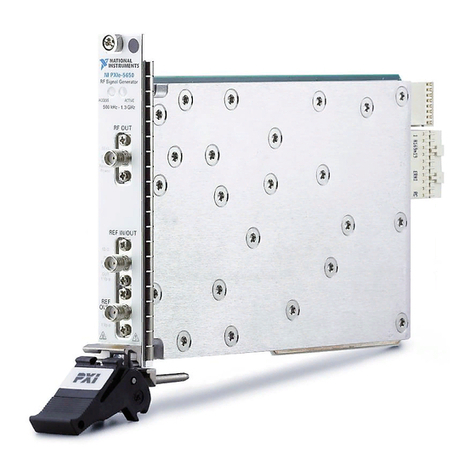
National Instruments
National Instruments PXIe-5650 Getting started guide
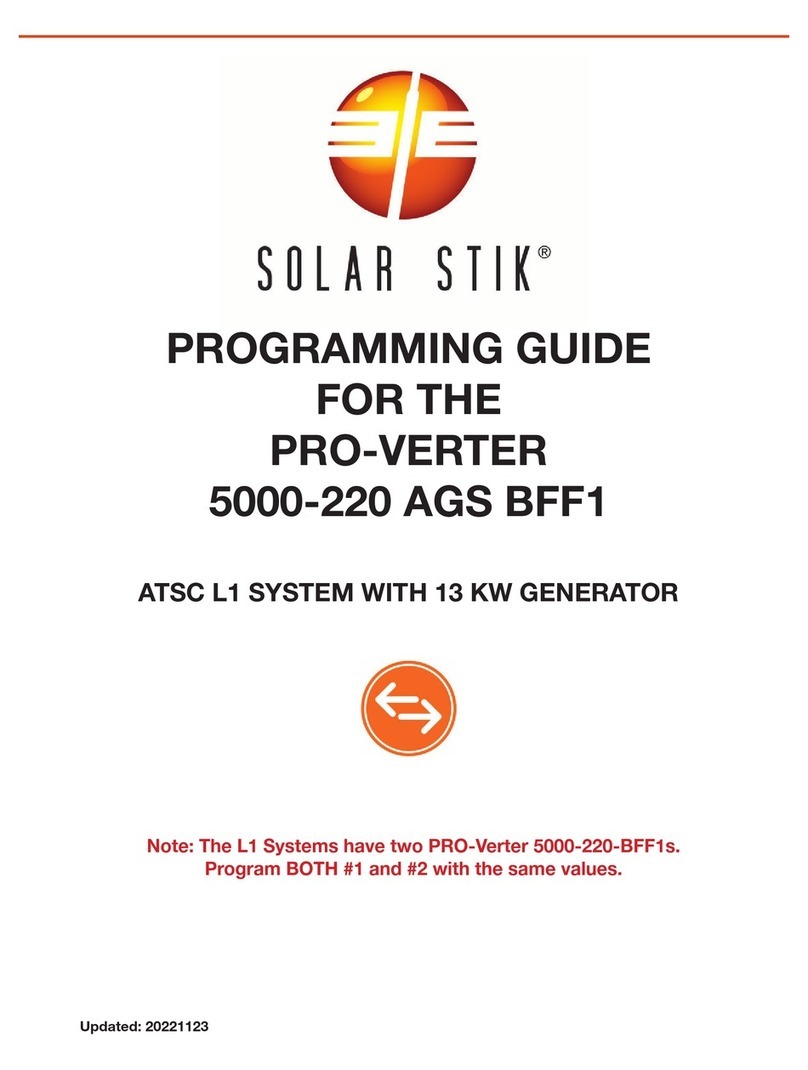
Solar Stik
Solar Stik PRO-VERTER 5000-220 AGS BFF1 Programming guide
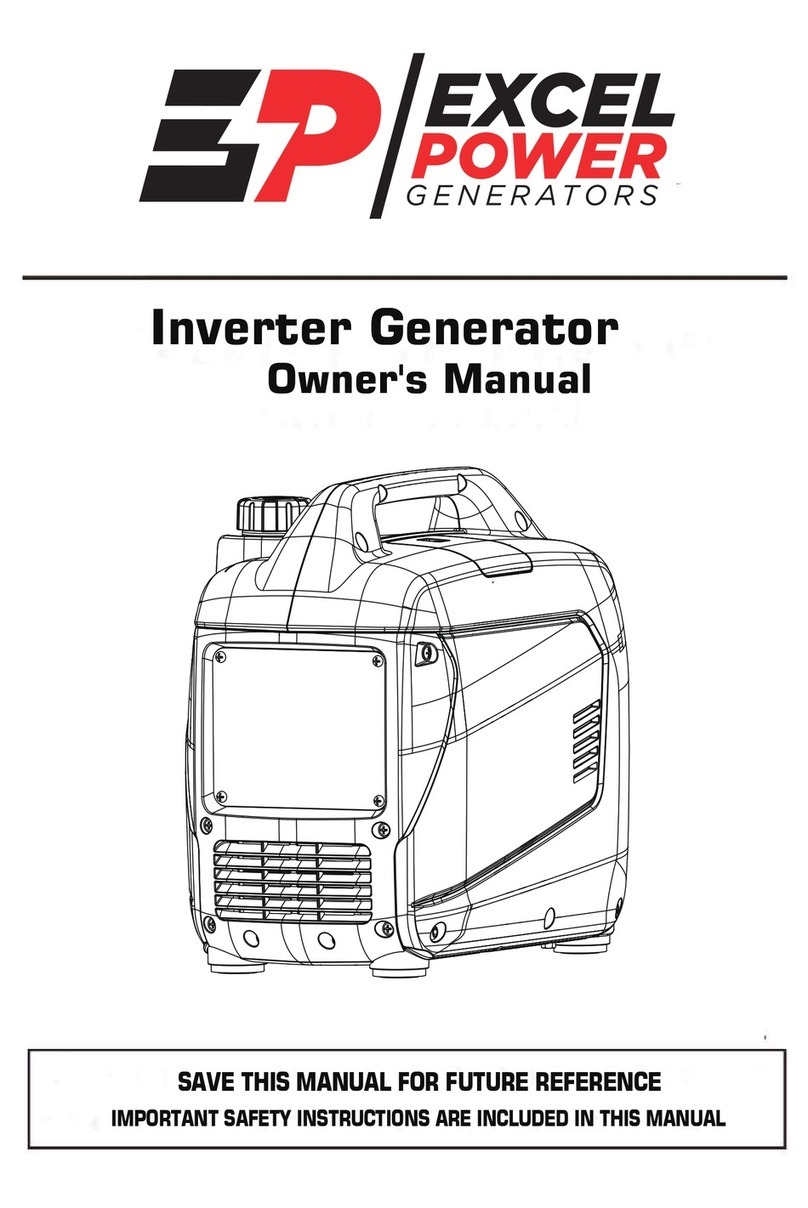
Excel Power
Excel Power XL1400i owner's manual
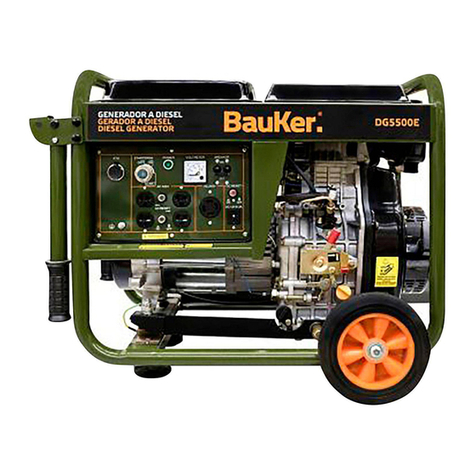
BAUKER
BAUKER DG5500E instruction manual
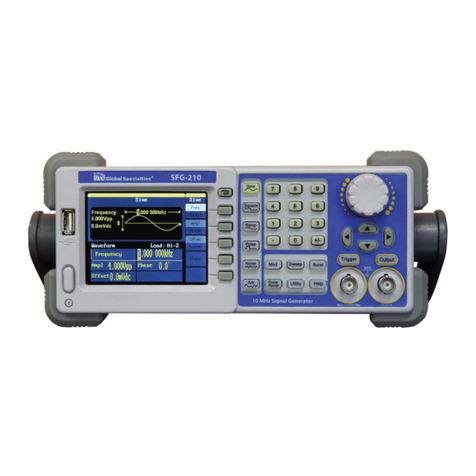
Teledyne
Teledyne SFG-20 Series user manual
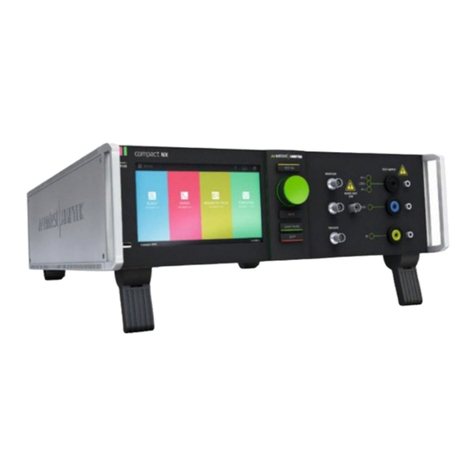
Ametek
Ametek EM TEST compact NX quick start guide

